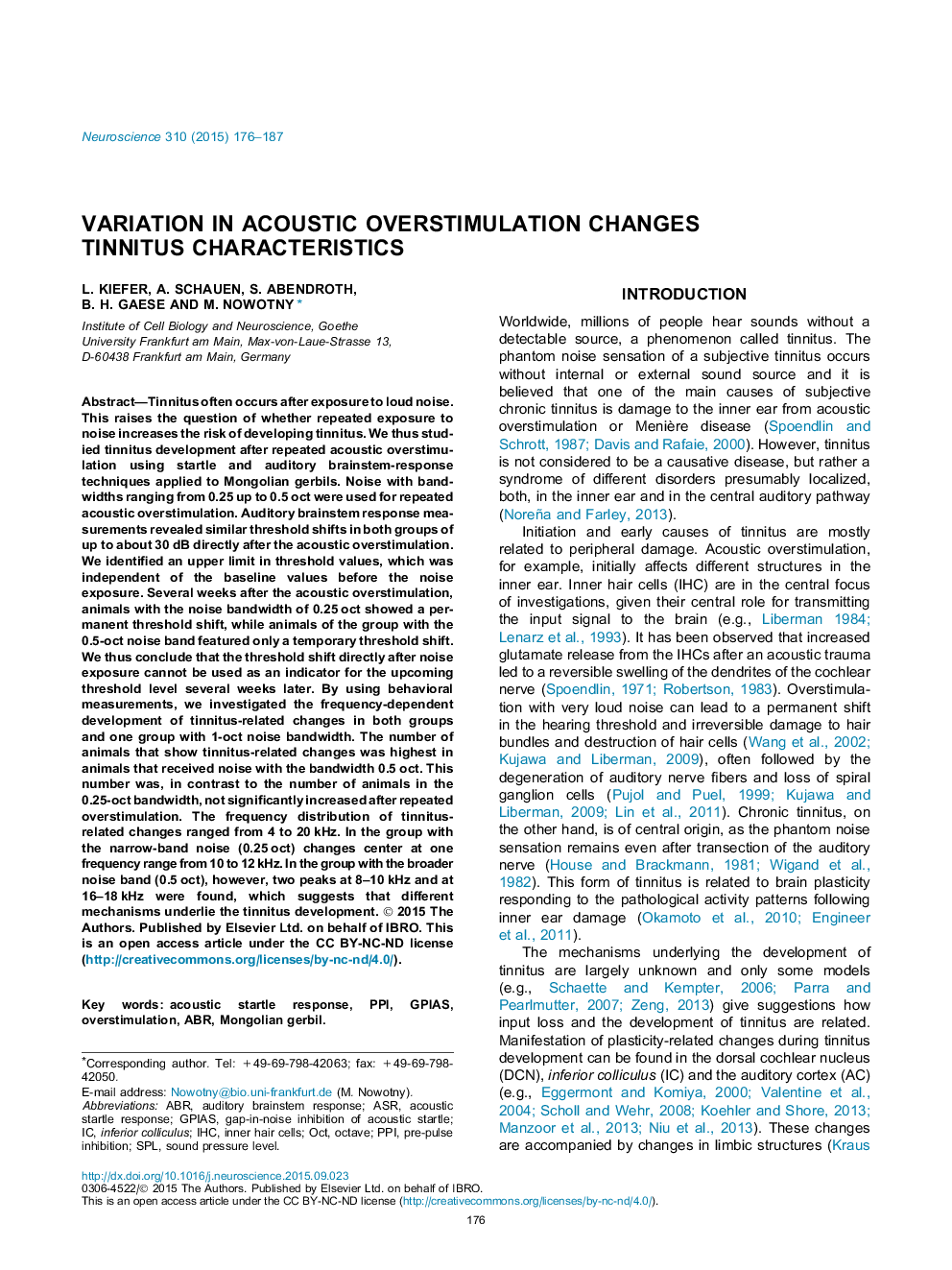| کد مقاله | کد نشریه | سال انتشار | مقاله انگلیسی | نسخه تمام متن |
|---|---|---|---|---|
| 6271595 | 1614766 | 2015 | 12 صفحه PDF | دانلود رایگان |
- Trauma-induced threshold shifts are limited independent of trauma bandwidth.
- Risk for tinnitus after trauma is highest at intermediate trauma bandwidths (0.5Â oct).
- Frequency components in tinnitus percept changes non-linearly with trauma bandwidths.
- Repetition of noise trauma leads only to a minor increase in tinnitus induction.
Tinnitus often occurs after exposure to loud noise. This raises the question of whether repeated exposure to noise increases the risk of developing tinnitus. We thus studied tinnitus development after repeated acoustic overstimulation using startle and auditory brainstem-response techniques applied to Mongolian gerbils. Noise with bandwidths ranging from 0.25 up to 0.5Â oct were used for repeated acoustic overstimulation. Auditory brainstem response measurements revealed similar threshold shifts in both groups of up to about 30Â dB directly after the acoustic overstimulation. We identified an upper limit in threshold values, which was independent of the baseline values before the noise exposure. Several weeks after the acoustic overstimulation, animals with the noise bandwidth of 0.25Â oct showed a permanent threshold shift, while animals of the group with the 0.5-oct noise band featured only a temporary threshold shift. We thus conclude that the threshold shift directly after noise exposure cannot be used as an indicator for the upcoming threshold level several weeks later. By using behavioral measurements, we investigated the frequency-dependent development of tinnitus-related changes in both groups and one group with 1-oct noise bandwidth. The number of animals that show tinnitus-related changes was highest in animals that received noise with the bandwidth 0.5Â oct. This number was, in contrast to the number of animals in the 0.25-oct bandwidth, not significantly increased after repeated overstimulation. The frequency distribution of tinnitus-related changes ranged from 4 to 20Â kHz. In the group with the narrow-band noise (0.25Â oct) changes center at one frequency range from 10 to 12Â kHz. In the group with the broader noise band (0.5Â oct), however, two peaks at 8-10Â kHz and at 16-18Â kHz were found, which suggests that different mechanisms underlie the tinnitus development.
160
Journal: Neuroscience - Volume 310, 3 December 2015, Pages 176-187
